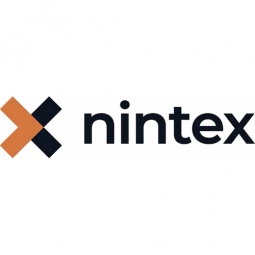Technology Category
- Application Infrastructure & Middleware - Event-Driven Application
- Cybersecurity & Privacy - Security Compliance
Applicable Industries
- Buildings
- Finance & Insurance
Applicable Functions
- Product Research & Development
- Quality Assurance
Use Cases
- Leasing Finance Automation
- Time Sensitive Networking
Services
- System Integration
- Training
About The Customer
FIMBank plc. is a leading provider of trade finance, factoring, and forfaiting solutions, with a global presence in various important financial and trading centers. The bank is at the forefront of introducing and developing innovative receivable finance techniques in emerging markets. FIMBank operates in the specialist field of corporate banking, where financial institutions must be able to offer customers tailored financial services as soon as they need them. The bank is based in Malta and serves customers worldwide.
The Challenge
FIMBank, a leading provider of trade finance, factoring, and forfaiting solutions, was facing challenges in its back-office operations. The bank was struggling to respond quickly to customer demand for its specialized financial services due to inefficient back-office operations. The existing credit approval process was particularly problematic. Each credit request required an in-depth review and a significant amount of information to be collated and submitted to the bank’s risk department. The process relied on email and paper-based documents, some up to 200 pages long. Multiple versions of these documents led to confusion, and delays occurred while managers checked the information. As a result, several days could elapse between a customer requesting credit and the application being ready for consideration.
The Solution
FIMBank decided to automate several key processes using K2 software, which was chosen for its tight integration with Microsoft SharePoint. The bank now has over ten automated back-office banking processes, covering areas including customer onboarding, expense claims, real estate security, regulatory event management, and treasury deals processing. The software has enabled FIMBank to save hours of administrative time in its back-office functions, freeing up employees to work on more value-adding tasks. For example, an automated process for transferring the details of new treasury deals directly into the core banking system eliminates manual data entry, so ticket processing is completed in 1/5 of the time. The credit approval process was also streamlined. A request for credit that is raised in the morning can now be ready for assessment by the Risk Department by the end of the day.
Operational Impact
Quantitative Benefit

Case Study missing?
Start adding your own!
Register with your work email and create a new case study profile for your business.
Related Case Studies.

Case Study
Energy Saving & Power Monitoring System
Recently a university in Taiwan was experiencing dramatic power usage increases due to its growing number of campus buildings and students. Aiming to analyze their power consumption and increase their power efficiency across 52 buildings, the university wanted to build a power management system utilizing web-based hardware and software. With these goals in mind, they contacted Advantech to help them develop their system and provide them with the means to save energy in the years to come.

Case Study
Intelligent Building Automation System and Energy Saving Solution
One of the most difficult problems facing the world is conserving energy in buildings. However, it is not easy to have a cost-effective solution to reduce energy usage in a building. One solution for saving energy is to implement an intelligent building automation system (BAS) which can be controlled according to its schedule. In Indonesia a large university with a five floor building and 22 classrooms wanted to save the amount of energy being used.

Case Study
Powering Smart Home Automation solutions with IoT for Energy conservation
Many industry leaders that offer Smart Energy Management products & solutions face challenges including:How to build a scalable platform that can automatically scale-up to on-board ‘n’ number of Smart home devicesData security, solution availability, and reliability are the other critical factors to deal withHow to create a robust common IoT platform that handles any kind of smart devicesHow to enable data management capabilities that would help in intelligent decision-making

Case Study
Real-time In-vehicle Monitoring
The telematic solution provides this vital premium-adjusting information. The solution also helps detect and deter vehicle or trailer theft – as soon as a theft occurs, monitoring personnel can alert the appropriate authorities, providing an exact location.“With more and more insurance companies and major fleet operators interested in monitoring driver behaviour on the grounds of road safety, efficient logistics and costs, the market for this type of device and associated e-business services is growing rapidly within Italy and the rest of Europe,” says Franco.“The insurance companies are especially interested in the pay-per-use and pay-as-you-drive applications while other organisations employ the technology for road user charging.”“One million vehicles in Italy currently carry such devices and forecasts indicate that the European market will increase tenfold by 2014.However, for our technology to work effectively, we needed a highly reliable wireless data network to carry the information between the vehicles and monitoring stations.”

Case Study
Protecting a Stadium from Hazardous Materials Using IoT2cell's Mobility Platform
There was a need for higher security at the AT&T Stadium during the NFL draft. There was a need to ensure that nuclear radiation material was not smuggled inside the stadium. Hazmat materials could often be missed in a standard checkpoint when gaining entry into a stadium.








